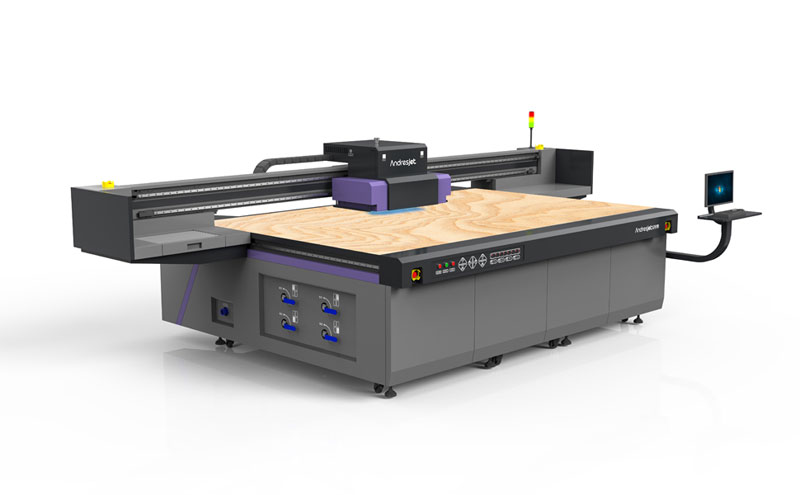UV Flatbed Printer: How Does it Compare to Other Printing Methods?
UV Flatbed Printer: How Does it Compare to Other Printing Methods?
In the realm of digital printing, technology has been advancing rapidly, offering businesses and individuals a wide array of options to choose from when it comes to reproducing images and text onto various surfaces. Among these, UV flatbed printers have gained significant popularity in recent years due to their versatility, efficiency, and high-quality output. This article delves into the specifics of UV flatbed printing technology, exploring how it compares to other common printing methods such as screen printing, digital direct-to-garment (DTG) printing, and traditional offset printing.

Understanding UV Flatbed Printing
UV flatbed printers are a type of digital printing technology that utilizes ultraviolet (UV) light to cure or dry ink immediately after it is applied to a substrate. This process allows for printing on almost any flat or slightly curved surface, including but not limited to glass, wood, metal, plastic, leather, and even some types of fabric. The ink used in UV flatbed printers is specially formulated to be cured by UV light, resulting in vibrant, durable prints that are resistant to fading, scratching, and environmental factors.
One of the key advantages of UV flatbed printing is its ability to produce highly detailed prints with accurate color reproduction. This makes it an ideal choice for applications where visual quality is crucial, such as in the production of promotional materials, fine art reproductions, and product prototypes. Additionally, UV flatbed printers can accommodate variable data printing, allowing for customization and personalization of each printed item.
Comparison with Screen Printing
Screen printing, also known as silkscreen printing, is a traditional printing method that involves creating a stencil (a screen) for each color in the design and manually pushing ink through the screen onto the substrate. While screen printing is known for its durability and cost-effectiveness when printing large quantities of the same design, it has several limitations compared to UV flatbed printing.
Firstly, screen printing requires a significant setup time, as each color in the design needs a separate screen to be prepared. This makes it less suitable for short-run or on-demand printing jobs. UV flatbed printers, on the other hand, can quickly switch between designs and even incorporate variable data, making them more versatile for a wide range of printing needs.
Secondly, screen printing is limited to printing on materials that can withstand the pressure of the ink being pushed through the screen. This excludes delicate or heat-sensitive materials, where UV flatbed printing can excel due to its non-contact printing process.
Lastly, while screen printing offers vibrant colors, the ink used is not UV-curable, meaning the prints may not be as resistant to fading or wear as those produced by UV flatbed printers.
Comparison with Digital Direct-to-Garment (DTG) Printing
Digital direct-to-garment (DTG) printing is another popular digital printing method, specifically designed for printing on textiles such as cotton and polyester blends. Like UV flatbed printing, DTG printing allows for high-resolution, full-color prints with excellent detail. However, there are distinct differences between the two technologies.
DTG printers use water-based inks that are absorbed into the fabric, resulting in a soft, breathable print. This makes DTG printing ideal for apparel and textiles where comfort is essential. UV flatbed printers, while capable of printing on some types of fabric, excel at printing on rigid surfaces and use UV-curable inks that create a harder, more protective finish.
Another difference lies in the curing process. DTG prints require time to air-dry or go through a heat press to cure the ink, which can add to production time. UV flatbed prints, on the other hand, are instantly cured by UV light, allowing for immediate handling and finishing.
Comparison with Traditional Offset Printing
Traditional offset printing is a well-established printing method that involves transferring an image from a plate to a rubber blanket, then rolling the image off the blanket onto the printing surface. Offset printing is renowned for its ability to produce high-quality prints at a low cost per unit, especially when printing large volumes.
However, offset printing requires a significant setup process, including plate making and ink mixing, which makes it less suitable for short-run or customized printing jobs. UV flatbed printers, with their digital workflow, can quickly adapt to different designs and incorporate variable data without the need for extensive setup.
Furthermore, offset printing is limited in terms of substrate versatility. It is primarily used for printing on paper and cardboard. UV flatbed printers, on the other hand, can print on a wide range of materials, making them more versatile for various applications.
Conclusion
UV flatbed printing offers a unique combination of versatility, high-quality output, and efficiency that sets it apart from other printing methods. While traditional methods like screen printing, DTG printing, and offset printing each have their own strengths and are well-suited for specific applications, UV flatbed printing stands out for its ability to print on a wide range of materials, produce durable prints with vibrant colors, and accommodate short-run and customized printing jobs.
As technology continues to advance, UV flatbed printers are becoming more accessible and cost-effective, making them an attractive option for businesses and individuals seeking a versatile and high-quality printing solution. Whether for promotional materials, product prototyping, or fine art reproduction, UV flatbed printing offers a compelling proposition in the digital printing landscape.
